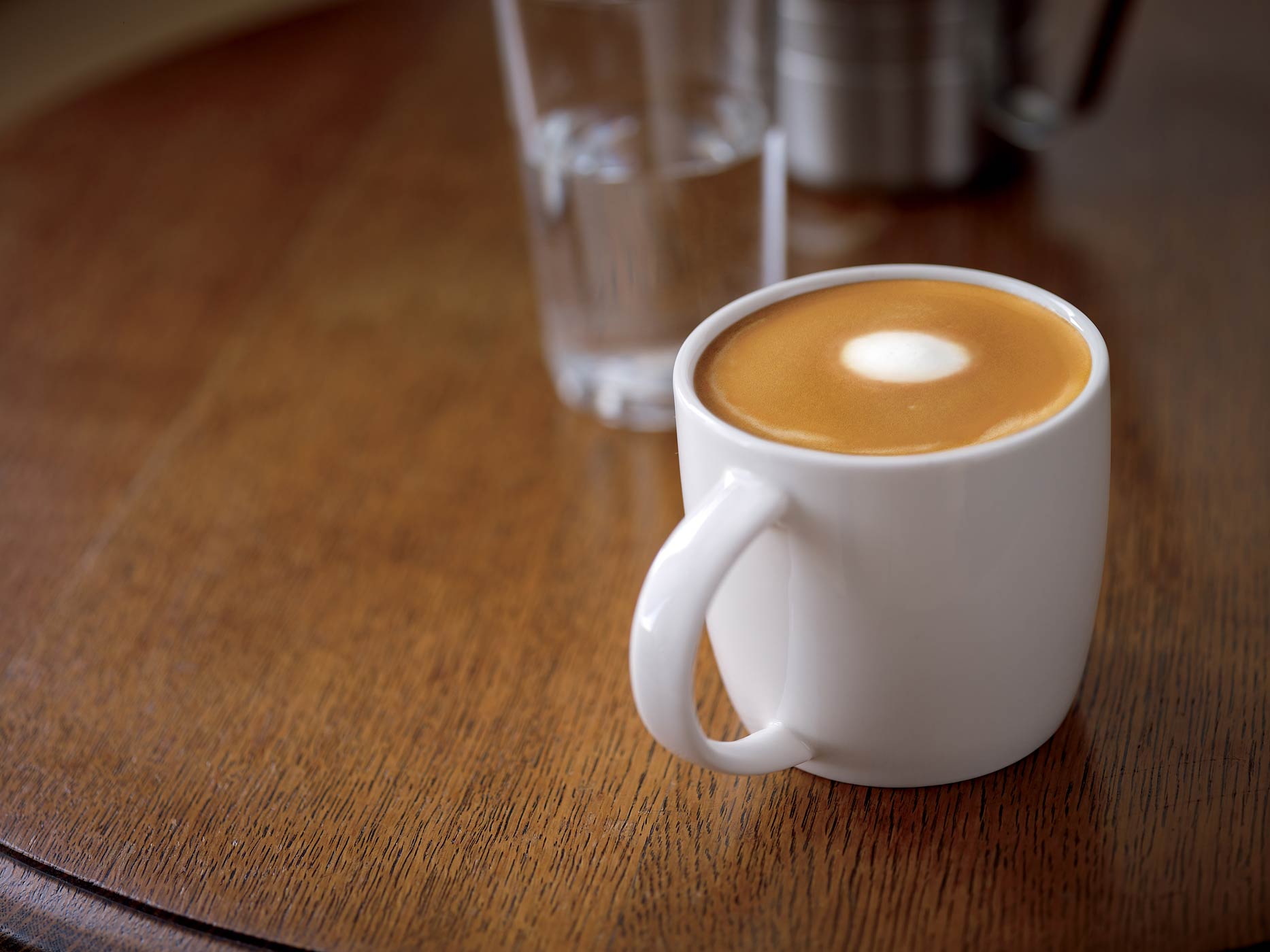
As of Tuesday, Americans will no longer have to leave the country to get a “flat white,” the Australian coffee drink Starbucks introduced at U.S. locations on Jan. 6. But that doesn’t mean a trek Down Under in search of good cup of coffee isn’t worth the trip.
There’s more than a little irony in the coffee chain’s latest menu addition: Starbucks was unceremoniously drummed out of Australia last year after failing to make inroads in a market dominated by local cafes. There’s some controversy as to where exactly the flat white was invented (was it Sydney? or Melbourne? Even New Zealand makes a convincing claim) but in any event the entire country has had a homegrown, thriving coffee culture for decades thanks to waves of immigrants, especially from Greece and Italy after World War II, who imprinted their love for the roasted bean on Australia at least as much as the English did their love for beer on the United States. The flat white has been available for several years at Starbucks in the UK but only now is the behemoth of coffee bringing the drink to American shores.
Australian coffee purists will be tempted to dust off their pitchforks and torches over the following two statements but the issues must be addressed so I’m dispensing with them here all at once.
1. A flat white is, roughly speaking, like a latte but silkier in texture, made with ristretto (extra-strong espresso), and served in a short and wide ceramic mug as opposed to the larger, taller, latte cup. For this writer, it’s Australia’s best cup of joe and easily one of the best vectors for java in the world.
2. Coffee culture is well-established and cultivated with care in cities throughout Australia, but Melbourne, with its artsy vibe, relatively large Greek and Italian populations and funky cafe scene, is the country’s coffee capital. On a recent visit to Melbourne I stayed with an old friend and longtime Melbournite, Tim, who lives in a Kazakh yurt near a goat barn on Hibi Farm, a small neighborhood farm in the city’s suburbs, if that gives you an idea of the general vibe.
Your correspondent is not a particularly sophisticated coffee drinker. For me, a cup of joe generally registers as either bad, decent or excellent. Suffice to say all the coffee described henceforth sips comfortably at the top end of that scale. With that side of things settled, the coffee experience is about place as much as bean.
Auction Rooms is certain to make an appearance in any discussion of coffee in Melbourne. The expansive cafe is a major North Melbourne gathering place and a sort of anchor in the city’s coffee scene—a local paper, The Age, held last year’s Good Cafe Guide Awards there. Comfortably drenched in natural light with high ceilings and a finished industrial interior, this places bustles. Small groups of young people (Auction Rooms isn’t far from the University of Melbourne) chatter and sip flat whites and long blacks (another Aussie coffee drink—it’s basically an Americano) and eat from an extensive menu.
Closer to the University is Seven Seeds Cafe, an understated hangout with a skylight that bathes the counters in sunshine. Exposed brick and plywood walls give the place an unfinished, industrial feel. It’s not easy to spot, located down quiet Berkeley Street, which makes it a good place for a quieter cup. As an added bonus, the cafe roasts its own beans too (and beans for a number of other shops around town).
My favorite cafe in Melbourne is one of the smallest, Brother Baba Budan, which serves Seven Seeds coffee out of a small storefront off Little Bourke St., a quirky and narrow one-way thoroughfare in the Central Business District. Not far from Melbourne’s historical Chinatown, Brother Baba Budan exudes a sort of zen garden-meets-Alice in Wonderland feel, with a ceiling tiled—if you can call it that—entirely by chairs. It’s a much loved establishment by locals and by this tourist, too.
When it comes to coffee, the full experience is as much about place as anything. Which is why, if you enjoy a Starbucks flat white, you should try and make the trip to Australia in search of the real thing. Though Brother Baba Budan won my heart, the best cups of coffee I had were in Tim’s yurt, made with beans roasted on the farm, steamed milk from the goats and sweetened with honey from a neighbor’s beehive. Tim’s own bees having been confiscated by friends tired of one-too-many trips to the hospital (Tim is allergic to bees and also stubborn). How’s that for homegrown?
More Must-Reads from TIME
- Why Trump’s Message Worked on Latino Men
- What Trump’s Win Could Mean for Housing
- The 100 Must-Read Books of 2024
- Sleep Doctors Share the 1 Tip That’s Changed Their Lives
- Column: Let’s Bring Back Romance
- What It’s Like to Have Long COVID As a Kid
- FX’s Say Nothing Is the Must-Watch Political Thriller of 2024
- Merle Bombardieri Is Helping People Make the Baby Decision
Contact us at letters@time.com